To start, tell us about yourself. What’s your background & how did you get into making art?
I grew up in Tennessee, where I spent most of my days outside. Our front and backyard were filled with trees and my mother planted gardens all around our house and barn, and we had all sorts of plants and vegetables growing. There were also wild raspberry bushes that grew along the edges of our property, and there were often deer, rabbits, hawks, and all sorts of creatures around. A river ran behind our home and when it rained hard, the river flooded its banks and our backyard became a small lake. There was something magical about that. It was magical that many stretches of road where we lived didn’t have street lights, so the stars were always out and you could hear owls at night. As kids we would build small fires on the banks of the river, draw pictures in the mud, collect rocks and forgotten relics (trash) that we found under the murky water. These are just some of the small glimpses/ reasons why I took up an art practice. I’ve always felt I’m chasing after the beauty and mystery of the natural world, using its language to describe/ search the forms of so many unnamable things.
Cody Tumblin
The artist on chasing beauty & mystery, a studio practice that resonates with an etheral musical experience & supporting art world strategies that offer real, meaningful connections in an increasingly digital age.
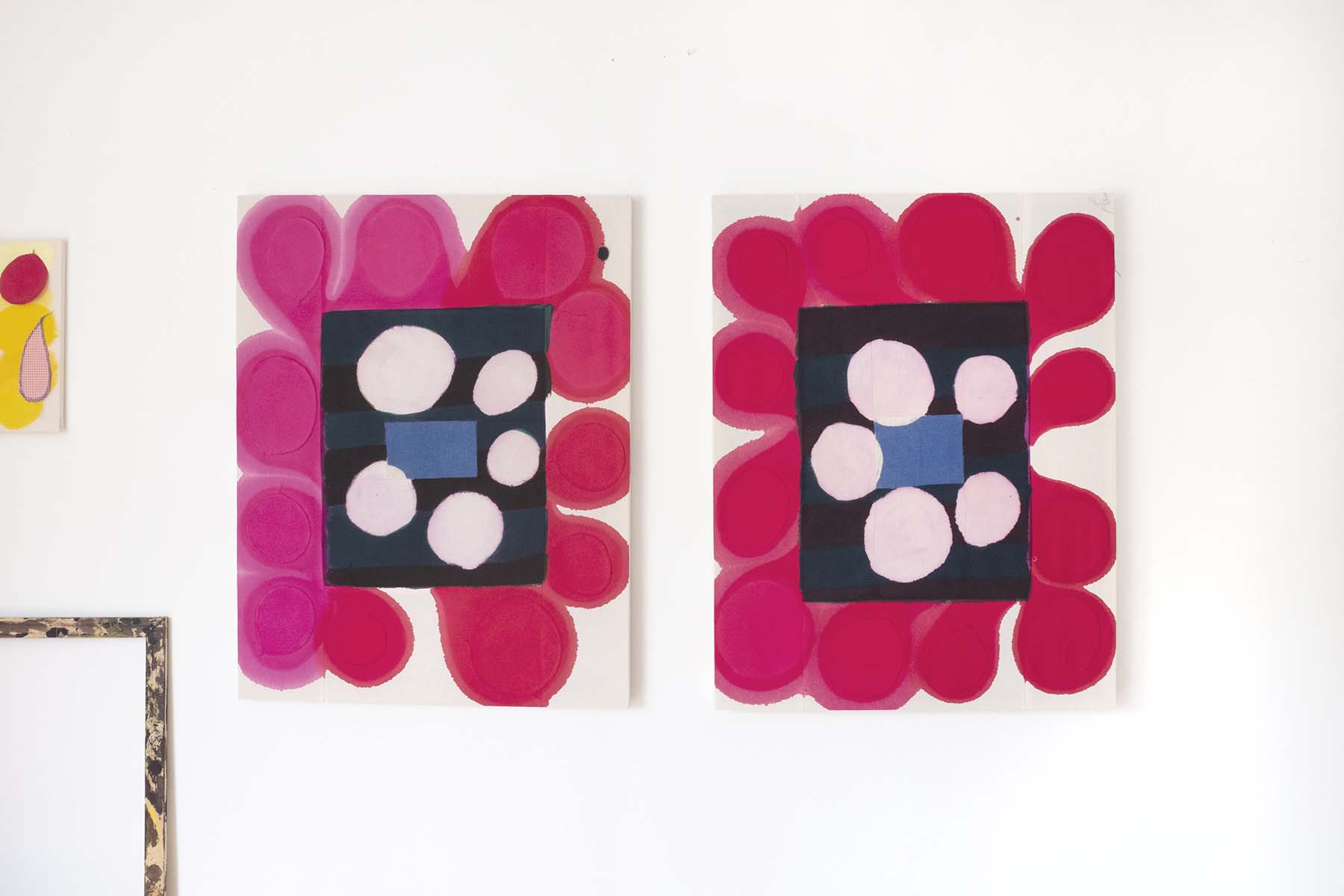

Cody Tumblin, Two Blued, 2019, zipper, dyed cotton, bleach, acrylic, thread, 11x14"

Cody Tumblin, Falling Apart, 2019, zipper, dyed cotton, bleach, acrylic, thread, 11x14”
What are you currently working on? Describe your most recent body of work.
Over the past few years, I’ve been sewing unfinished paintings into larger bodies of fabric, and sort of dancing around them with collaged sewn forms that are painted with layers of saturated stains. When describing them to friends, I use the analogy of doodling around a picture of your crush in a yearbook– not only is the doodling around the image a kind of framing device, but it also performs as a kind of loving act that celebrates the image. As each painting is made, a lot of the collage is added/ removed during the painting process and sewn onto a nearby painting. There is a lot of transplanting and cross pollination between the paintings– they share their bits and pieces as they move toward completion. I think in a lot of ways, this allows them to talk to one another, to develop their own language, to carry a common voice. I don’t want to say too much, but I really let myself indulge in the making of these objects. There are many loving gestures that collectively make these works carry weight.
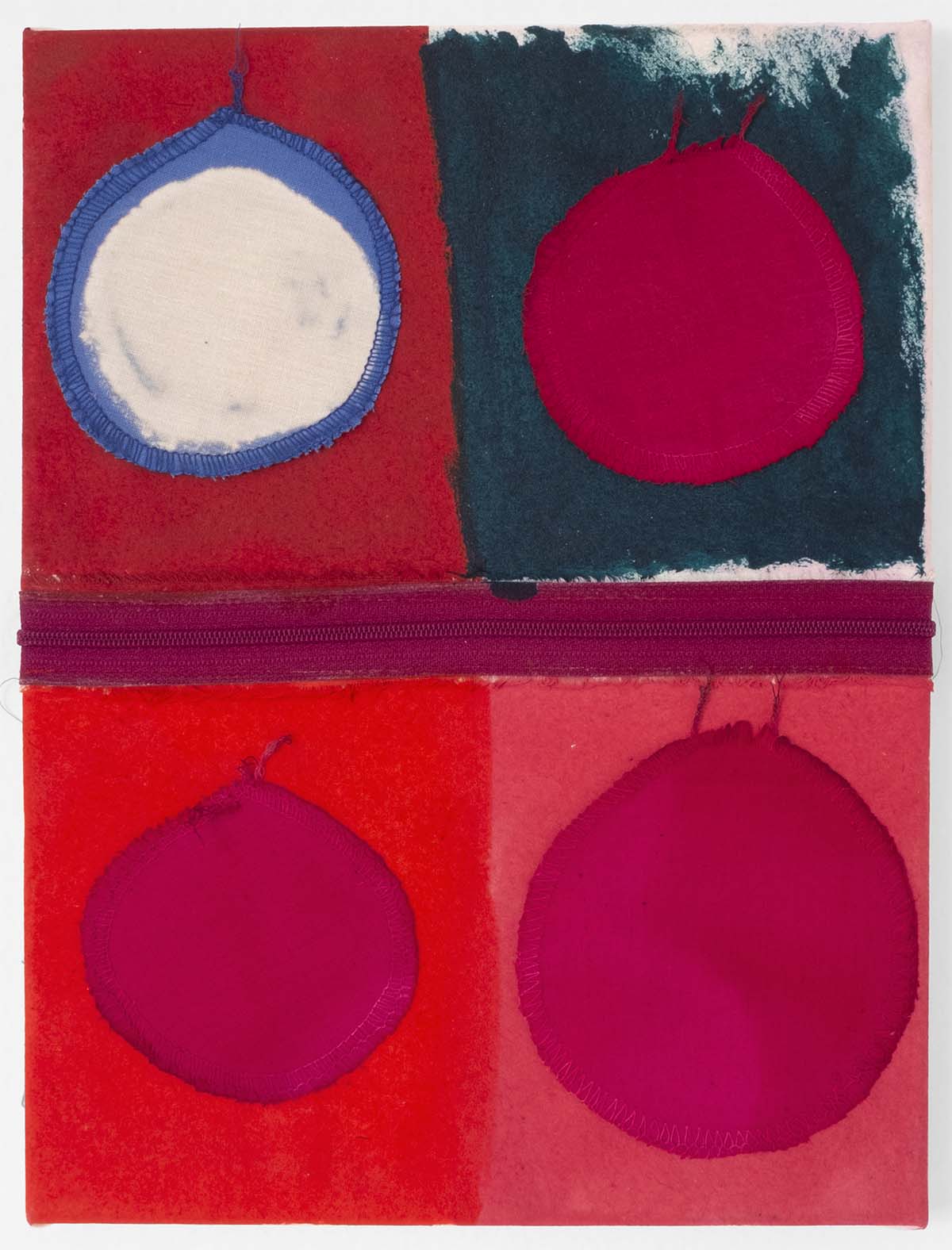
Cody Tumblin, Greener Grass, Bluer Skies, 2019, zipper, dye, acrylic and bleach on dyed cotton and muslin, thread, 9x12"
Do you work in distinct projects or do you take a broader approach to your practice?
I don’t work in very distinct bodies of work, I tend to work from a few larger material choices, maybe “rules,” let those rules unravel, then follow the threads back up to discover things I might have missed along the way. I think its a bit like a song that drifts in an open window from a passing car and later you find yourself humming to a song that’s entirely different but carries a similar melody. For instance, I’ve started making lots of smaller paintings with a single zipper sewn down the center, and then there are smaller painted fragments, collage and bleach that unite them. They still have a kind of dance to them that the larger works have, but with a bit more play. Now the larger works have started to become a bit more bisected because of this new rhythm I’m learning which is exciting.
Describe a day in your studio. What is your schedule like, how do you divide your time?
I think an early and slow start is pretty important for me. Wake up early, slowly shake off the sleep with a cup of tea, flip through books (and I can’t deny that there’s quite a bit of time on my phone), and then start to get into things as my mind wakes up. I mostly divide my days off from my day job into administrative days where I document work, emails, PDFs, applications, and days where I actually make work. I like to watch something during a long lunch break, cook for myself, and then get back into it until I feel I’ve done enough or the sun goes down. I like the energy of the morning light, and I intentionally give myself the evenings to relax, see people, cook, play video games and forget about art. It’s important to have that division for me.
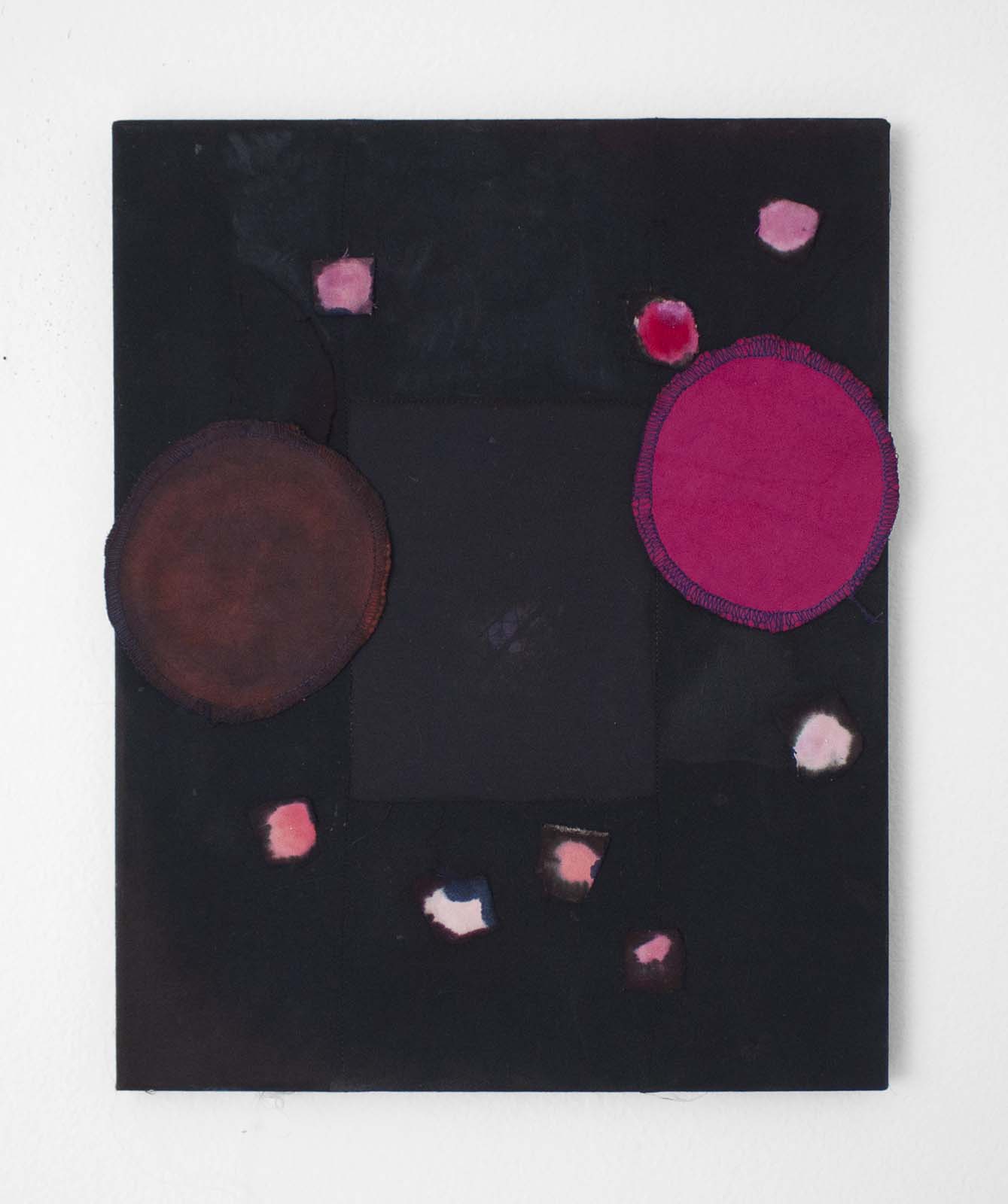
Cody Tumbling, Long Dawn Shadows, 2017-2018, dyed cotton, watercolor, acrylic, photograph of the moon on cotton, and thread, 12x15”
Has your practice been influenced by technological changes/advances either online or through social media?
I think, more and more, we see art being swallowed up by and married to various markets and trends in ways that didn’t exist in previous generations. This continues to degrade the value of art / turn art into a marketable spectacle that offers so little. So I find myself searching for ways to combat that, to search for exterior mechanisms that suppress the grandeur of art like cooking for people at openings or serving them tea, exchanging recipes. I’ve held community potlucks and bring-your-leftovers nights in lieu of typical solo shows where I only hang art on the walls. I also love seeing artists like Morgan Mandalay, a good friend of mine, use their solo exhibitions to curate group shows within the platform of the gallery. I’ve seen Chris Johanson and Johanna Jackson do something similar. There’s also works like Alison Knowles Makes A Salad that exist as Fluxus events to unite people around a simple act they can take part in. I’ve also been following Susan Cianciolo’s work closely for similar reasons. Her assemblages are typically the product of some event or game- maybe a DIY dressmaking kit composed of only a cardboard box and a collection of collage / fragments of instructions or an elaborate game board designed by her daughter, all the pieces inside hand painted and drawn with intention, purpose, and love. There are many ways to combat the dull narrative of what is expected.
Given our current cultural climate, the importance of artists is undeniable, we need them now more than ever. Do you find the social responsibility intimidating at all or does this help fuel your work?
I think artists have a very important role to bring light into the world, and I mean that sincerely. I don’t ever want to be an artist that fills the world with work that doesn’t reach out to others. I find that my work, more and more recently, has a tender and loving energy that I try to pursue and draw out as best as I can. I would say it is not always necessary that an artist carry the dialogues of our cultural/ political climate directly into the content of their work, but use the engagements surrounding what they do (the studio visits, the dinners, the exhibition text, the press releases, the relationships— every small part has a weight to it) to foster a community and a conversation. But it’s also important to say that we shouldn’t romanticize the artists role too heavily- it’s often more important to simply get out there and vote, to stay on top of our political climate and do your part.
I’m chasing
the beauty
and mystery
of the natural
world.
Cody Tumblin
What are some of the challenges you have experienced in your practice?
I’ll be honest. Every artist knows that being an artist, if you’re doing it right, is constantly producing, constantly self-promoting, and constantly chasing after relationships and sales that rarely pay off in your early career. The art world is often a very surface level entity that thrives off self-aggrandizement and celebrates the ego. I have intentionally made career choices, such as a well paying, stable day job, that allows me to exist outside of the co-dependence of the more loathsome parts of the art world ecosystem. We have unfortunately fostered a community where it is expected that you sacrifice / risk as much as possible / willingly give give give just to “catch a big break.” Show me a mid-career successful artist that isn’t strung out, often depressed, and wishes they had enough time and/or money on their hands to take a break (but on the outside is filled with really great promotional write-ups, great headlines, bright cheery photographs, and lots of emojis and smiles). We have to find ways to use our practice to unite people and build communities, to slow down, to bring light back into our daily lives. We have to find ways to fight back against this monster we’ve built, care for / support others that are suffering from it and call out and confront those who feed the fire.
What are some of the most rewarding aspects of art making?
I think it’s truly the small moments that occur around what I do. Like sharing dinner with an artist visiting from out of town, pouring tea for someone I’ve never met in a studio visit and getting to know them, someone describing a memory to me that suddenly comes to them when seeing my work. If you know me well, you know more than anything it’s all about the food and conversation. The only two pieces to the puzzle.
More and more often, when most people see my work in person for the first time they are always surprised by the surface of my paintings and the craft/ tenderness of their making, and those kinds of reactions mean a lot to me as well. To know that the care soaked into the seams of my work is not only visible but can spark something in another person.
I also love visiting schools or having people bring their students to my studio– hearing what excites them, what concerns them, what they’re searching for. These are always extremely valuable conversations.

Cody Tumblin, A Place Where Dreamers Wilt, 2018, dye and acrylic on canvas and cotton, thread, 28x36”
What is one art related book and non-art related book that you recommend other artists read?
As far as art books go, I typically loathe art theory and stay away from it. I recommend Art as Therapy by Alain de Botton and John Armstrong. It uses various works of art from a wide timeline to describe, in simple and straightforward ways, a spectrum of themes around love, memory, nature, politics, etc. I think a lot of artists get tied up in the complex mystique of their own making and forget the simplicities of what is possible.
For a non art book, the most recent thing I’ve been digging through is a flash fiction anthology (aptly titled Flash Fiction: 72 Very Short Stories) published in 1992 that is surprisingly wonderful. This condensed story telling format has a miraculous kind of fluidity that I didn’t expect. So little can contain an entire world and I find that invigorating. Also check out An Everlasting Meal by Tamar Adler, it’s spectacular.
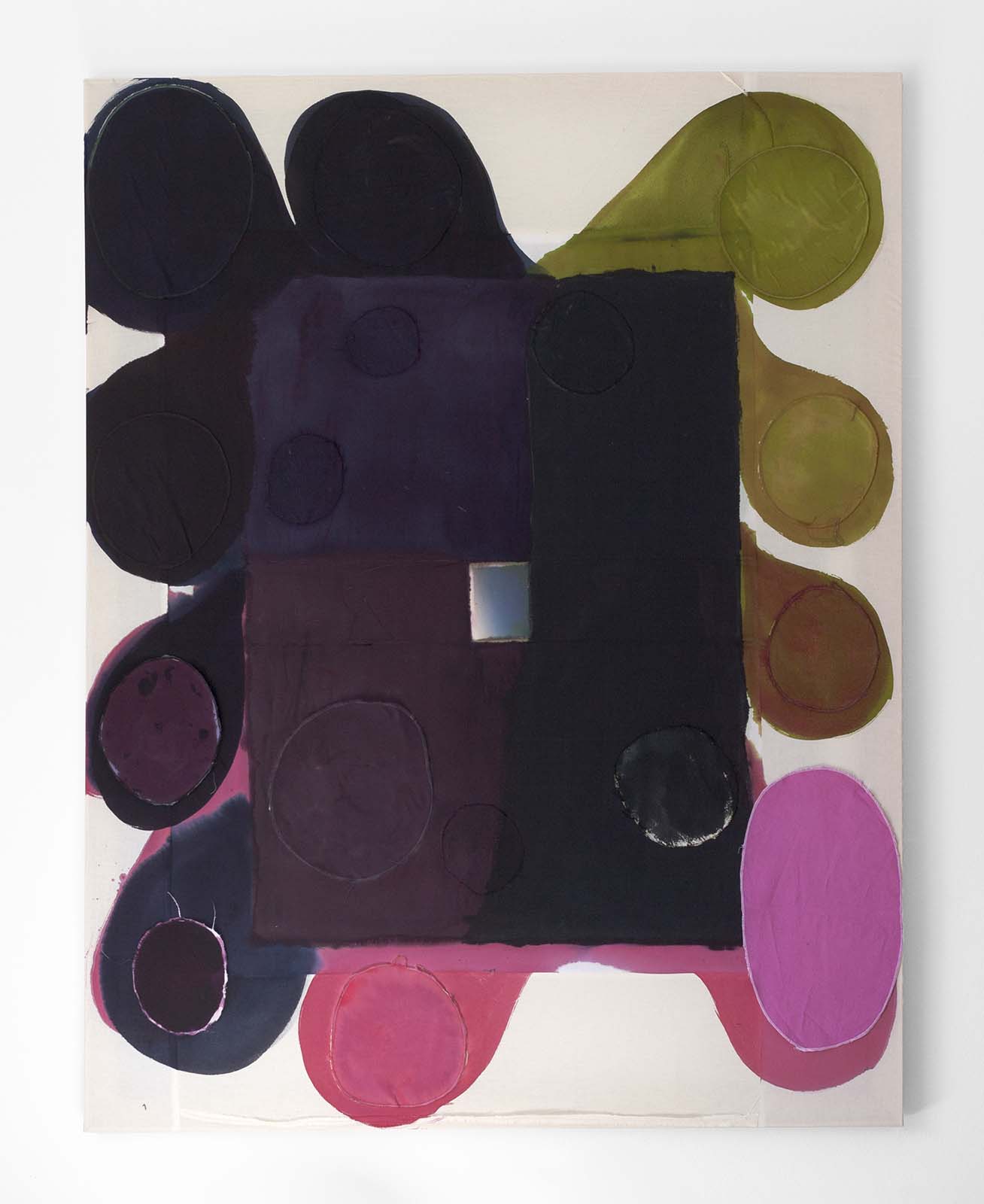
Cody Tumblin, Dreamer (Alborada), 2016-2018, dye and acrylic on cotton, photograph of the sky on cotton, bleach, thread, 50x64”
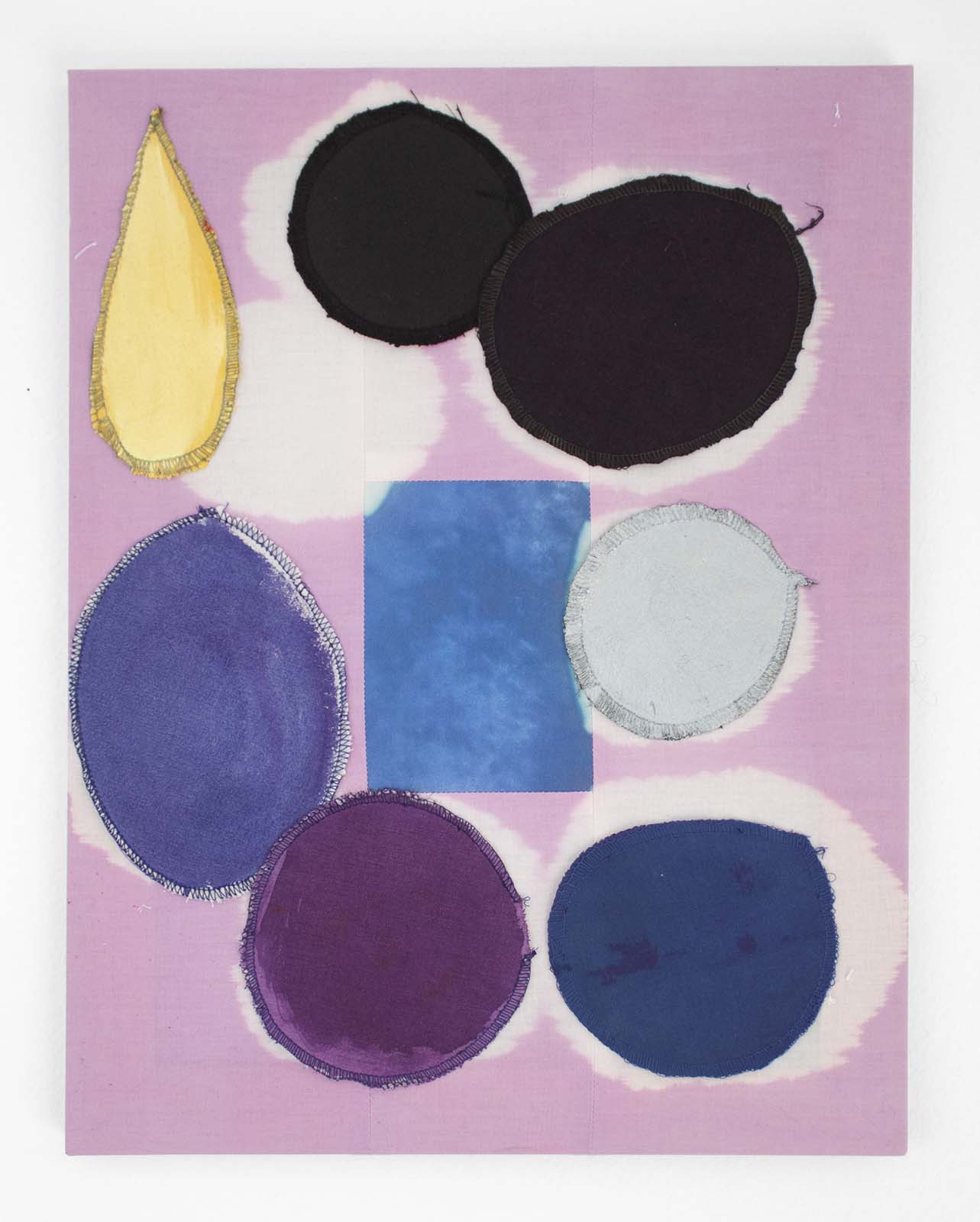
Cody Tumblin, Serene/ Chaos No.36, 2016-2018, dyed cotton, photograph of the sky on cotton, dye, acrylic, thread, 14x18”
What advice would you give to your younger self? How about to other artists? Are there lessons you have learned through your commitment to your practice which you think might be of value to others?
To other artists: Don’t let others take advantage of you and don’t sell your work short or give it away for free. Don’t cheapen the experience of what you do in exchange for an opportunity, ever. Also, if you didn’t know, there are a lot of lawyers out there who will do pro-bono work for creatives and their firms often give them bonuses for doing so. Get a lawyer to overlook all your contracts, commissions, consignments, and everything in between. It pays off to be protected by the right people. Be strong and be committed in everything you do, and find ways, even small ways, to make your practice serve / help others.
Cody Tumblin is an artist based in Chicago. He was recently shortlisted for The Hopper Prize. To learn more about the artist:
- Explore Cody Tumblin‘s finalist portfolio
- Visit the artist’s website at codytumblin.com where you can sign up for his newsletter along with a link to a newly released cookbook, published by Extended Play Press, titled Today’s Special. It’s 120 pages of half curated artist submissions and half anonymous recipes from recipe swaps held over the last two years.
- Follow Cody on Instagram @codytumblin



























































